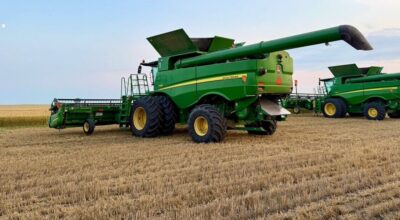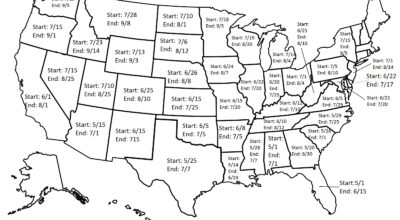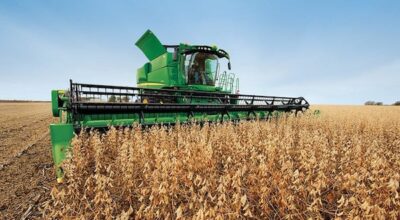Each year, the harvest season brings about the opportunity for producers to finally enjoy the fruits of their labor. According to the USDA, the summer wheat harvest takes place from mid-July to mid-September. As with any season within the world of agriculture, though, the timing for wheat harvest can differ from year to year due to a number of factors, especially weather conditions.
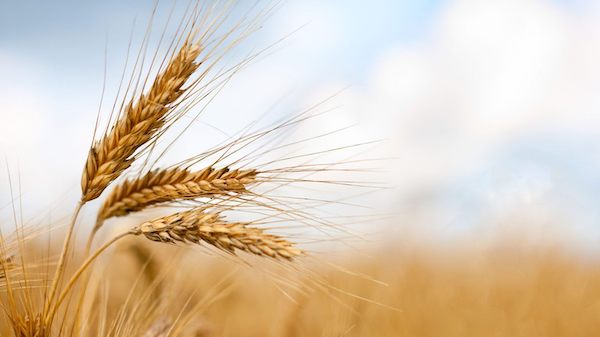
When heading into the wheat harvest season, producers should consider the important role this crop plays, ranking third among field crops in the US in planted acreage and production, just behind corn and soybeans. Not only is wheat an important crop for humans but it can also be used as silage for animals – while underrated compared to corn, wheat is a great option for feeding cattle.
As with any crop, producers must go into the wheat harvest season with an understanding of how the plants could potentially turn out, what types of equipment are needed, and how to maintain that equipment so it works throughout these few short months.
Tips for the Summer Wheat Harvest
Despite best efforts during the planting season, producers may experience issues during harvest as a result of conditions that may be out of their hands, including the climate. Certain weather conditions, specifically excess moisture, can lead to a crop that is malformed. This malformation could then affect other crops, meaning action needs to be taken as soon as possible.
Before harvesting begins, producers should be aware of the diseases that could have a negative impact on their wheat – this includes those affecting heads and grains, those affecting leaves, and those affecting the stems and roots.
Wheat Diseases
There is a range of diseases that can impact wheat crops, some of which are easily manageable while others require several steps to be taken in order to ensure the disease does not impact other crops. Below are three wheat diseases which affect heads and grain, leaves, and stems and roots, respectively.
Fusarium head blight
- Characterized by the premature whitening of wheat heads, this disease is caused by the fungus, Fusarium graminearum.
- Producers can manage this disease by increasing combine fan speed during harvesting and keeping the scabby grain away from other healthy crops.
Stagonospora nodorum blotch
- The lesions caused by this wheat disease can be characterized as being brown or tan and surrounded by a thin, yellow halo.
- Producers can manage this disease through the use of foliar fungicides, crop rotation, and fungicide seed treatment.
Take-all
- This wheat disease appears most commonly where susceptible crops are grown in a continuous fashion without being adequately rotated. Signs of infection include the plant being stunted early as well as whitening of the wheat head.
- Producers can manage this disease through crop rotation and by controlling grassy weeds.
In order to get the most out of the wheat harvest season, it is critical that producers are able to manage this crop effectively and improve yields. While this could involve factors such as crop rotation, fungicides, and separating out diseased crops from those that are healthy, machinery also plays a significant role. When considering the next steps for crop management, producers should work to understand options in terms of both technology and equipment in order to ensure maximum return during harvest.
Maximize Efficiency of Wheat Harvest with John Deere
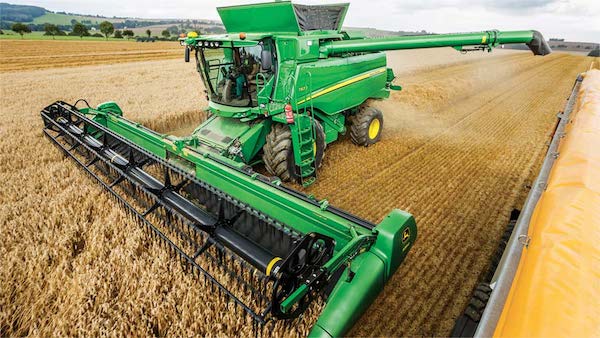
John Deere has a range of equipment designed to deliver consistent grain quality while harvesting. With the right equipment, producers can ensure that they are able to keep up with changing conditions and are being as efficient as possible. John Deere combines – including the S-Series and T670 – are able to help achieve this goal of maximum productivity thanks to a range of features.
S-Series Combines
This combine series consists of four models – S790, S780, S770, S760 – which are designed to handle various crops, including wheat. John Deere S-Series Combines offer a range of features which help boost performance throughout the harvest season. Let’s take a look at some of these offerings and how wheat producers can benefit.
ActiveYield
By employing ActiveYield technology during the summer wheat harvest, producers can eliminate the need for manual calibrations – this is achieved by the inclusion of automated sensors that calibrate the combine by measuring the grain as it fills the tank. Once the grain weight reaches 6,600 pounds, ActiveYield will stop taking measurements. This real-time measurement system enables producers to attain more accurate yield mapping and make educated decisions based on current data. This will ultimately result in a more successful wheat harvest season.
Dyna-Flo Plus Cleaning Shoe
The Dyna-Flo Plus Cleaning Shoe is designed to simplify the process of separating and cleaning grain – this feature improves cleaning capacity by 13% in wheat, resulting in more time spent out in the field harvesting. Additionally, this cleaning shoe reduces tailings by about 28% in order to boost overall speed and productivity.
Small Grains Package
Packages from John Deere are designed to improve performance and productivity by about 20% when harvesting grains like wheat. In order to meet this goal, features include:
- High-performance feeder house – Provides greater flexibility thanks to a front feed drum which provides 2 inches of additional movement when dealing with challenging crops.
- Active Concave Isolation – This feature applies hydraulic pressure as a means of better securing the concave, providing additional stability.
- Heavy-Duty Separator Grates – These grates, which include 2 rows of interrupter bars, offer greater uptime and a longer life span when facing challenging conditions. Additionally, the interrupter bars work to break up crop mat for maximum separation.
- 8-Wing Feed Accelerator – With this feature, producers can enjoy more time harvesting and experience improved material flow in tough conditions.
To learn more about how John Deere S-Series combines help producers improve their wheat harvest experience, watch the video below.
https://www.youtube.com/watch?v=lBM5G8L6vqg
T670 Combine
In addition to the capabilities of the S-Series combines, producers can also improve small grain handling by employing the John Deere T670 Combine. This piece of equipment offers the largest active separation as compared to other small-grain, walker combines available. Additionally, the T670 offers up to 15% more capacity in wheat and features the largest cleaning shoe of its kind on the market, designed to deliver stable performance, even under changing conditions while harvesting.
Similar to the S-Series models, this combine features the Dyna-Flo Plus Cleaning Shoe for more cleaning system capacity.
Attachments for John Deere Combines
John Deere also has a range of attachments to improve the wheat harvesting experience and improve productivity.
- HydraFlex Drapers – The technology built into these drapers enables more control when it comes to how much of the cutterbar’s weight is on the ground without compromising the ultra-low cutting height this header offers. Models include the 730FD, 735FD, 740FD, 745FD.
- 700D Drapers – These drapers are designed with features that help minimize outer divider plugging and improve feeding efficiency. Operators also have the option of a 14-inch feed drum which provides additional space for crop flow through the center feed section, thereby increasing throughput in header limited conditions. Models include the 740D, 735D, 730D, 725D.
Maintaining Your Equipment Throughout the Wheat Harvest Season
While weather and crop malformation play a large role in whether or not producers have a success wheat harvest season, equipment maintenance must be considered just as important. Throughout the season, producers should remember the following tips for combine maintenance:
- Inspect your machine regularly in order to avoid wasting time dealing with issues out in the field.
- Observe field conditions in order to determine how to address potential issues.
- Always be ready to make repairs to your equipment if necessary.
- Perform regular service checks for oil levels, fuel, and other factors that could impact operations.
Meeting goals during the harvest season can depend on a number of factors, from climate to equipment. By taking these factors into consideration throughout these months and taking action when necessary, producers can end the season on a high note and prepare themselves for future yields.
If you have any questions about how to improve the wheat harvesting experience, you can contact your local John Deere dealer.
If you enjoyed this post or want to read others, feel free to connect with us on Facebook, Pinterest, or Twitter!
